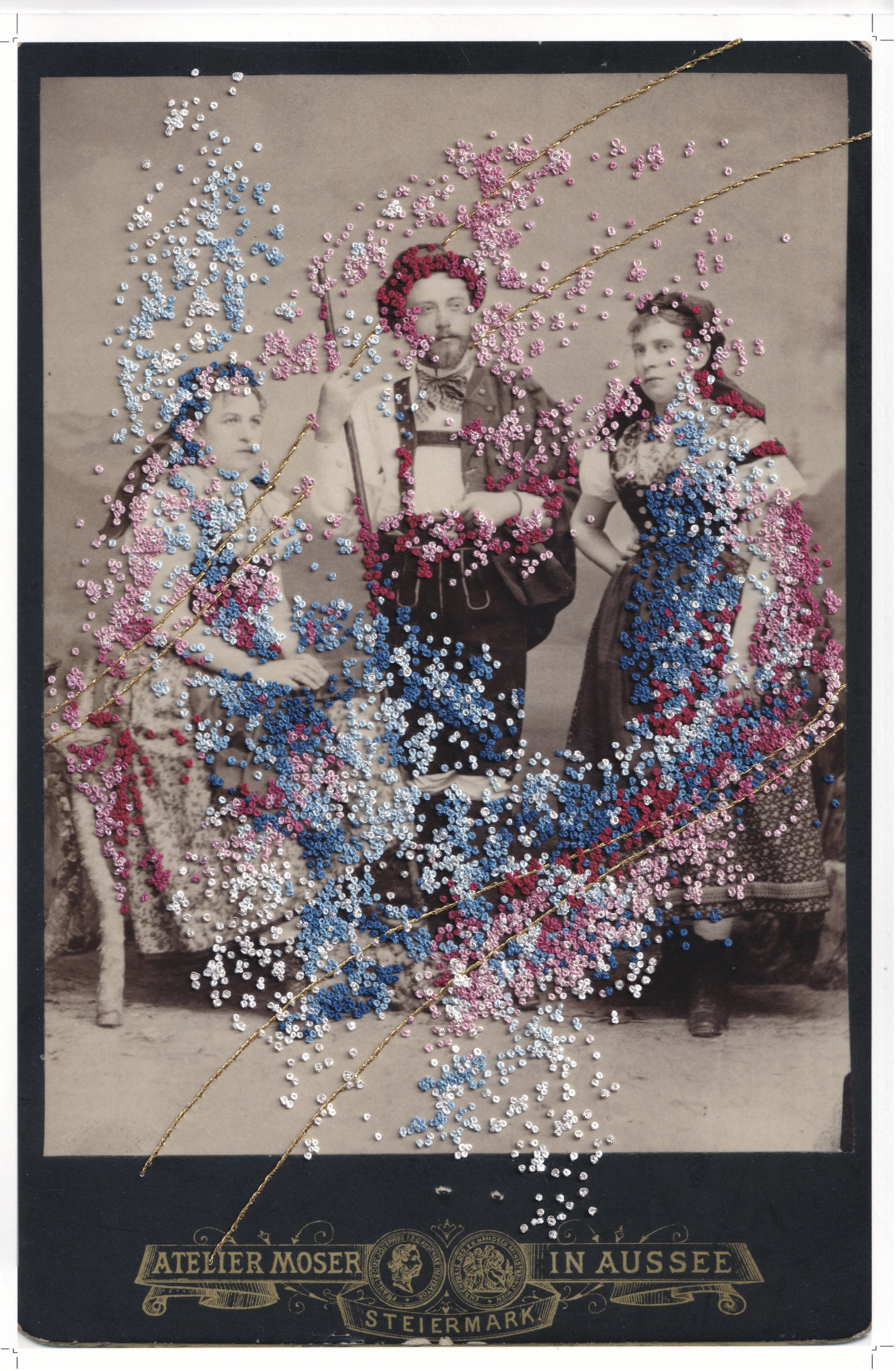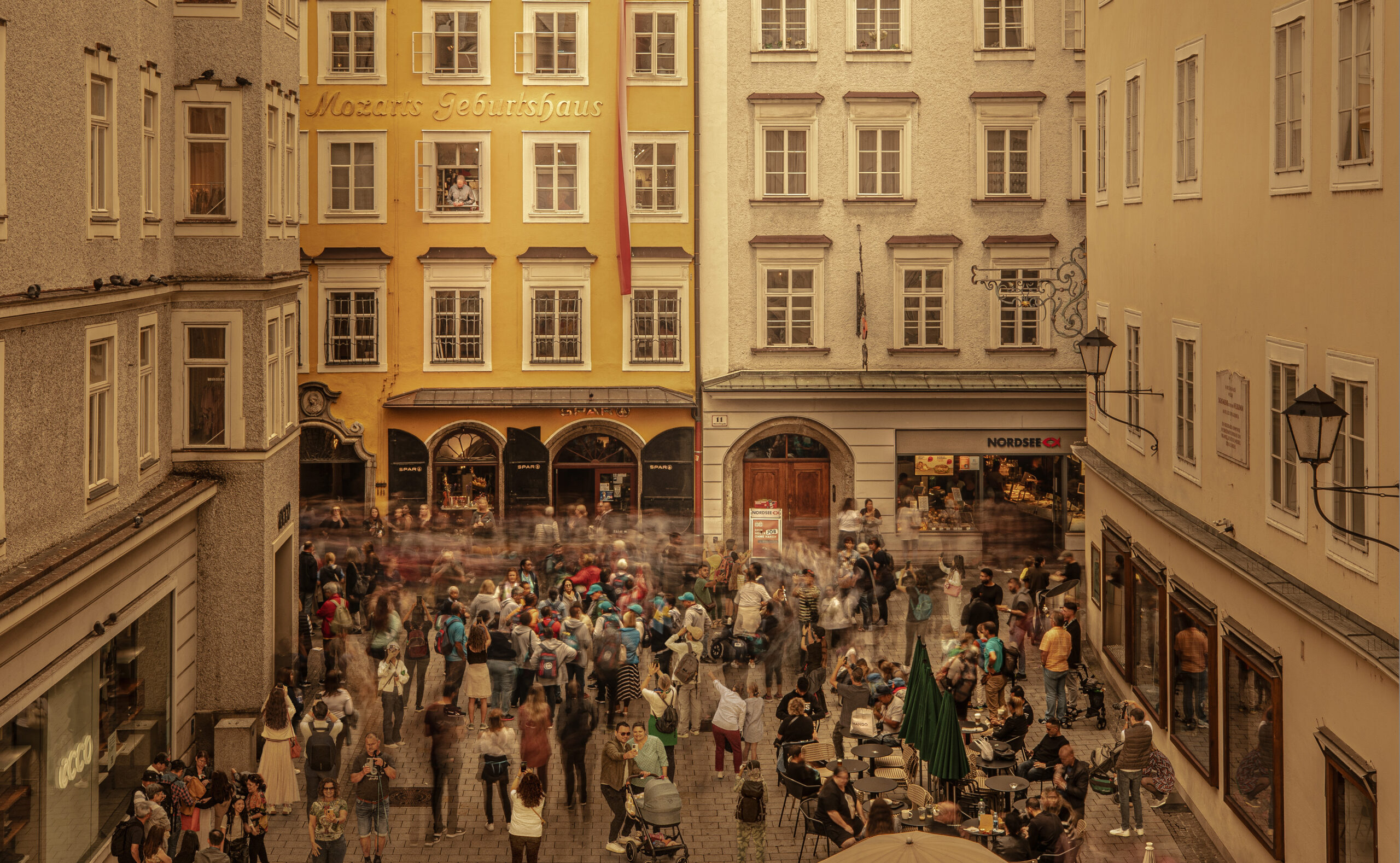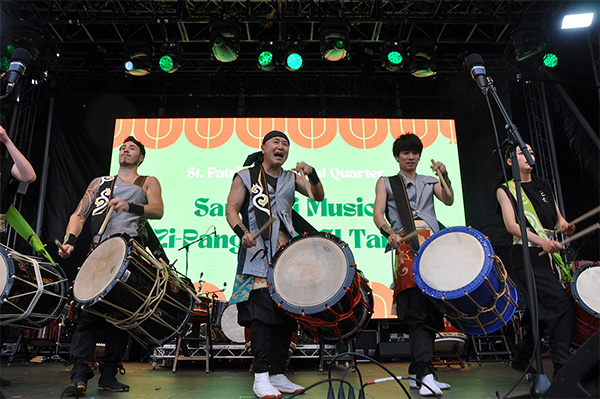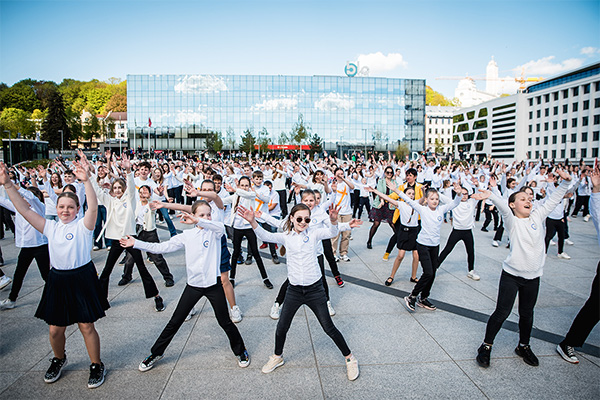Column
ColumnTime travel, (fictitious) journey into a different time (past, future)
The first time I saw Yukimi Akiba’s work was in an online competition of LensCulture. I scrolled through it and among many other photographs her work stood out in its sensitive poetic enveloping of historic portraits and hence in her ability to lift these studio portraits into tender and unforgettable works of art. I was enchanted!
And tried to get in contact with Yukimi to try and persuade her to take over a part of my “ZEITREISE. TIME TRAVEL – photography between living tradition and Modernity” project.
Yukimi Akiba was cautious, but finally agreed to work on three of Michael Moser’s studio portraits of residents from his native Aussee. I also convinced her to work on a larger scale than the postcard format she had used up to then. So we agreed on a A4 format and the material and paper quality the facsimiles of Moser’s photographs should be printed.

What followed were a number of e-mails to and fro from Japan to Austria to go into details of everything before I finally sent her two prints of every subject (in case something went wrong with the embroidery process) and then set myself to a waiting time of several months.
Yukimi always kept me informed about her working process and finally the embroidered prints were on their way back, not without mutual problems of the Japanese and Austrian postal services and customs.
When they finally arrived, I was enchanted again, first by their delicate and beautiful wrapping which anticipated something precious and special inside (I have kept the wrapping ever since). The content surpassed my expectations. Three historical studio photographs had been transferred into works of art. All of a sudden, they were telling the stories of three friends having their picture taken after a long night out before they were off to war enveloped in the wish of a happy return to their mountain valley and their families. Who knows if it ever happened, but now they are immortal. But not only this, a solemn family parting from their native village to find a better life in faraway America became wrapped in a Moonlight Lullaby to escort them to new prosperity and safety. And last but not least a brother and his two sisters in national costume were lifted to Romantic Poetry.
Yukimi Akiba’s work got instant recognition from all sides and so I decided to use one of her pictures for the PR of our exhibition in the first location in Grundlsee and it will also feature prominently in our third show in the Universalmuseum Joanneum, Haus für Geschichte in Graz, Styria, Austria.
Let me just quickly explain why I was seeking to engage a Japanese artist and how the mountain village of Altaussee and Japan are connected: This of course has to do with Michael Moser.
In 1867, at the age of 14, Moser, son of a miner and woodcarver, was taken to Vienna as an apprentice by Viennese photographer Wilhelm Burger. In 1868 the young boy accompanied Burger on the imperial and royal mission to East Asia, travelling via Cape Town, Java, Singapore, Bangkok, Saigon and Hong Kong as far as Yokohama. Moser, constantly sea-sick, decided to stay in Japan in 1869, working first in a dockland pub and then as a photographer for “Mr. Black”, publisher of the Japan Gazette / Far East. He learned to speak and write perfect Japanese and accompanied the Japanese delegation to the World Expo in Vienna in 1873 as an interpreter. On his return Moser was employed by the Japanese government as a photographer and moved to Tokyo. In 1876 he travelled as an interpreter with the Japanese delegation to the Centennial Exhibition in Philadelphia, fell ill and decided in 1877 to return to Altaussee. There he opened a successful photo studio, first in Altaussee, later in Bad Aussee. In 1889 he married Franziska Frühwirth, and a year later their only son Philipp was born. Moser was awarded the Silver State Prize for his photographic work.
He is recognized as one of the most important photographers of Japan’s Meiji epoch. (Yvonne Oswald, Curator)
Statement from Yukimi Akiba:
“His first voyage full of difficulties. When I imagined the waves the boy crossed, an ukiyoe by Katsushika Hokusai came to my mind. I felt that the splashing waves and their momentum were a perfect expression of the young energy and passion with which he decided to leave for a foreign land and the drastic changes of the Meiji era he spent in Japan. ‘Japan Blue and the Great Wave’ that became a symbolic image of his young spirit. The waves of color across the blue are a story born of the link between his gaze as he took these photographs and my timeless heart. In his gentle, tender gaze as he aged, I felt a deep prayer for the people reflected in these historical photographs. Imagining the beautiful landscapes of Japan and Austria at that time, and the future of the people in the photographs from actual episodes, I created a new story to be close to them.” (transcript from video)

Statement from the head of program European Capital of Culture Bad Ischl Salzkammergut 2024:
After the presentation in Grundlsee, a newly opened holiday resort on the Zloam – the right place to welcome visitors and inhabitants with the tradition of the region – the exhibition traveled to Mozart’s Residence/Mozart Foundation Salzburg (from 06.09 to 31.12 2024) and to the Joanneum in Graz (from 30.01. until 18.05. 2025).
All three exhibitions were made possible thanks to the European Capital of Culture Bad Ischl Salzkammergut 2024 and their heads of program. Both the exhibition in Grundlsee in the Salzkammergut and the one in the Mozart’s Residence attracted 50,000 visitors. This encouragement clearly showed that the contemporary view of history and traditions is an important contribution to the examination of one’s own self-image. In the work of Yukimi Akiba two cultures come together that emphasize contrast and commonality – a togetherness that creates enrichment. An important sign in times when the other is seen more as an enemy than a friend.
Without tradition we are nothing, but remaining in it makes us rigid and inflexible. The Time Travel exhibition enables a different view of the past and takes you into the future in order to understand it better and to be able to cope with the new challenges.







